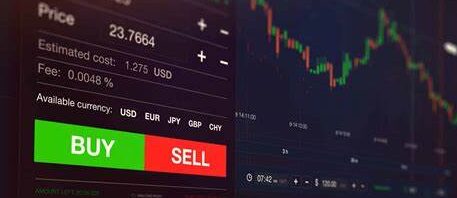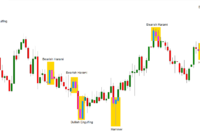bbc.towzdog.com – Entering the world of forex trading can be both exciting and daunting, especially for beginners. Understanding the basics of forex, the mechanics of trading, and the strategies involved is crucial for success. This Forex for Beginners Guide aims to provide you with a clear and thorough understanding of the forex market, its terminologies, and the essential steps you need to take as you embark on your trading journey.
What is Forex?
Understanding the Forex Market
Forex, short for foreign exchange, is the largest financial market in the world, where currencies are traded. Unlike stock markets, which are centralized, the forex market operates 24 hours a day across different time zones, making it accessible to traders globally. The primary purpose of the forex market is to facilitate international trade and investment by allowing businesses to convert one currency into another.
How Forex Trading Works
In forex trading, currencies are traded in pairs. Each currency pair consists of a base currency and a quote currency. For instance, in the pair EUR/USD, the euro (EUR) is the base currency, and the US dollar (USD) is the quote currency. When you buy a currency pair, you are buying the base currency and selling the quote currency simultaneously.
Key Concepts in Forex Trading
Pips and Lots
- Pips: A pip is the smallest price movement in a currency pair, usually the fourth decimal place. For example, if the EUR/USD moves from 1.1000 to 1.1001, it has moved one pip.
- Lots: In forex, transactions are made in lots. A standard lot is 100,000 units of the base currency. There are also mini lots (10,000 units) and micro lots (1,000 units) for smaller trades.
Leverage
Leverage allows traders to control larger positions with a smaller amount of capital. For example, with a leverage of 100:1, a trader can control $100,000 with just $1,000. While leverage can amplify profits, it also increases risk, making it essential for beginners to use leverage cautiously.
Bid and Ask Price
The bid price is the price at which the market will buy a specific currency pair from you, while the ask price is the price at which you can buy a currency pair from the market. The difference between the bid and ask price is known as the spread, which represents the broker’s profit.
Margin
Margin is the amount of money required to open a leveraged position. For example, if you want to trade one standard lot of EUR/USD at a leverage of 100:1, you will need a margin of $1,000 (1% of $100,000).
Steps to Get Started with Forex Trading
Educate Yourself
Before diving into forex trading, it’s essential to educate yourself about the market. Understanding key concepts, trading strategies, and market analysis methods will significantly improve your chances of success. Consider the following resources:
- Books: Look for well-reviewed forex trading books that cover the basics and advanced strategies.
- Online Courses: Many platforms offer free or paid courses on forex trading.
- Webinars and Tutorials: These provide practical insights and live trading examples.
Choose a Reliable Broker
Selecting the right broker is crucial for a successful trading experience. Here are some factors to consider:
- Regulation: Ensure your broker is regulated by a reputable authority, such as the Financial Conduct Authority (FCA) or the Commodity Futures Trading Commission (CFTC).
- Trading Platform: The trading platform should be user-friendly and offer essential tools for analysis.
- Spreads and Fees: Compare spreads, commissions, and withdrawal fees among different brokers.
- Customer Support: Good customer support is vital, especially for beginners who may have questions.
Open a Trading Account
Once you’ve selected a broker, you’ll need to open a trading account. Most brokers offer different types of accounts, including:
- Demo Account: Ideal for beginners, a demo account allows you to practice trading with virtual money before risking real capital.
- Standard Account: Suitable for regular traders who want to trade live.
- Islamic Account: Designed for traders who require Sharia-compliant trading conditions.
Develop a Trading Plan
A well-defined trading plan is essential for success. Your plan should include:
- Trading Goals: Define what you want to achieve (e.g., short-term gains, long-term investment).
- Risk Management: Determine how much capital you are willing to risk per trade (commonly 1-2% of your total account).
- Trading Strategies: Identify the strategies you will use, whether fundamental, technical, or a combination of both.
Start Trading
Now that you have a solid foundation, it’s time to start trading. Here are some tips for your initial trades:
- Begin with Major Currency Pairs: Major pairs like EUR/USD, USD/JPY, and GBP/USD have higher liquidity and tighter spreads.
- Use a Demo Account: Start by trading on a demo account to gain experience without risking real money.
- Analyze the Market: Use both fundamental and technical analysis to make informed trading decisions.
Trading Strategies for Beginners
Scalping
Scalping involves making small profits from numerous trades throughout the day. Scalpers usually hold positions for a few minutes and rely on high liquidity and tight spreads. This strategy requires quick decision-making and strong market knowledge.
Day Trading
Day trading involves opening and closing positions within the same trading day. Day traders focus on short-term price movements and often use technical analysis to identify trends. This strategy requires a good understanding of market volatility and quick execution.
Swing Trading
Swing trading involves holding positions for several days or weeks to capitalize on price swings. Swing traders use both technical and fundamental analysis to identify potential entry and exit points. This strategy is suitable for those who cannot monitor the market constantly.
Position Trading
Position trading is a long-term strategy where traders hold positions for weeks, months, or even years. This approach is less affected by short-term volatility and focuses on the overall trend of the market. Position traders rely heavily on fundamental analysis.
Risk Management in Forex Trading
Importance of Risk Management
Effective risk management is critical for any trader, especially beginners. Without a proper risk management strategy, traders may face significant losses that can quickly deplete their accounts.
Key Risk Management Techniques
- Set Stop-Loss Orders: A stop-loss order automatically closes a trade at a predetermined loss level, helping you limit your losses.
- Diversify Your Portfolio: Avoid putting all your capital into one trade. Diversifying your trades across different currency pairs can reduce risk.
- Use Proper Position Sizing: Determine the appropriate size of each trade based on your total capital and risk tolerance.
Common Mistakes to Avoid
Overleveraging
Using excessive leverage can lead to significant losses. It’s essential to use leverage wisely and avoid taking on more risk than you can handle.
Ignoring Economic News
Economic events and news can drastically impact currency prices. Ignoring these can lead to unexpected losses, so it’s crucial to stay informed.
Lack of a Trading Plan
Trading without a clear plan can lead to emotional decision-making and erratic trading behavior. A well-defined trading plan helps keep you focused and disciplined.
Chasing Losses
Many traders fall into the trap of trying to recover losses by taking impulsive trades. This approach often leads to even greater losses. Stick to your trading plan and avoid emotional trading.
Current Trends in Forex Trading
The Impact of Digital Currencies
The rise of digital currencies, such as Bitcoin and Ethereum, has introduced new trading opportunities and volatility to the forex market. Traders are increasingly exploring the intersection between traditional forex trading and cryptocurrency trading.
Increased Use of Automated Trading Systems
Automated trading systems and algorithms are becoming more popular among traders. These systems can execute trades based on predefined criteria, allowing for quicker and more efficient trading.
Growing Importance of Environmental, Social, and Governance (ESG) Factors
As global awareness of sustainability increases, ESG factors are becoming more relevant in financial markets, including forex. Traders are considering these factors when evaluating economic indicators and making trading decisions.
Conclusion
Embarking on your journey in forex trading can be a rewarding experience, but it requires education, planning, and discipline. This Forex for Beginners Guide has provided you with essential knowledge about the forex market, key concepts, and steps to get started.
By educating yourself, choosing a reliable broker, and developing a solid trading plan, you can navigate the forex market with confidence. Remember to prioritize risk management and avoid common mistakes to maximize your chances of success.




